-
Global warming of 2.5°C degrees would put at risk trillions of dollars of world’s financial assets
An average of $2.5 trillion, or 1.8 percent, of the world’s financial assets would be at risk from the impacts of climate change if global mean surface temperature rises by 2.5°C (4.5°F) above its pre-industrial level by 2100, according to a new study. that the authors found, however, that uncertainties in estimating the “climate Value at Risk” mean that there is a 1 percent chance that warming of 2.5°C could threaten $24 trillion, or 16.9 percent, of global financial assets in 2100.
-
-
California drought patterns becoming more common

Atmospheric patterns resembling those that appeared during the latter half of California’s ongoing multi-year drought are becoming more common. The current record-breaking drought in California has arisen from both extremely low precipitation and extremely warm temperature. The new study found clear evidence that atmospheric patterns that look like those seen during this extreme drought have in fact become more common in recent decades.
-
-
Analyzing the effects of rising sea levels in Norfolk, Va.
In Norfolk, Virginia, an East Coast city which is home to the world’s largest naval station and important seaports, catastrophic flooding could damage more than homes and roads. A new study from Sandia National Laboratories assesses how much the city, its region, and the nation would suffer in damages to national assets and lost economic activity if it does nothing to address rising sea levels. The analysis method is available to cities that want to become more resilient.
-
-
Rapid Antarctica ice melt: Sea-level rise nearly double over earlier estimates
A new study suggests that the most recent estimates by the Intergovernmental Panel on Climate Change for future sea-level rise over the next 100 years could be too low by almost a factor of two. The researchers incorporated into their models mechanisms that were previously known but never incorporated in a model like this before, and added them to their ice-sheet model, so they could consider the effects of surface melt water on the break-up of Antarctica’s ice shelves and the collapse of vertical ice cliffs.
-
-
Starvation is only one crop breeding cycle away
Global population growth, urbanization, and a changing climate mean staple food crops will need to achieve much higher yields in the near future. New research proposes genetic engineering solutions to improve photosynthetic efficiency of food crops, boosting yield under higher temperatures and carbon dioxide levels. Because it can take twenty to thirty years of breeding and product development efforts before new crops are available to farmers, those efforts must start now.
-
-
Laser cloaking device to help us hide Earth from aliens
Several prominent scientists, including Stephen Hawking, have cautioned against humanity broadcasting our presence to intelligent life on other planets. Two astronomers suggest humanity could use lasers to conceal the Earth from searches by advanced extraterrestrial civilizations.
-
-
Wildfire map shows European countries most at risk of catastrophic fire damage
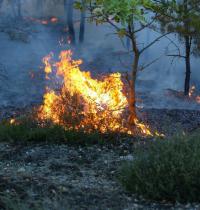
Cities and tourist areas such as Catalonia, Madrid, and Valencia are among those most at risk of catastrophic damage from wildfires in Europe, according to research. An international research team has put together a map using satellite data that details the countries in Europe with the highest likelihood of experiencing wildfire damage — with large fires occurring more frequently near “Wildland-Urban Interface” WUI areas in the countries of Albania, Bulgaria, Cyprus, France, Italy, and Spain.
-
-
Water problems in Asia’s future?
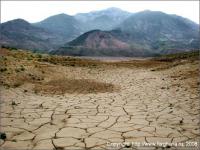
Economic and population growth on top of climate change could lead to serious water shortages across a broad swath of Asia by the year 2050. Having run a large number of simulations of future scenarios, the researchers find that the median amounts of projected growth and climate change in the next thirty-five years in Asia would lead to about one billion more people becoming “water-stressed” compared to today.
-
-
Fracking linked to most induced earthquakes in western Canada
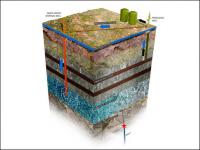
A survey of a major oil and natural gas-producing region in Western Canada suggests a link between hydraulic fracturing or “fracking” and induced earthquakes in the region. The study’s findings differ from those reported from oil and gas fields in the central United States, where fracking is not considered to be the main cause of a sharp rise in induced seismicity in the region. Instead, the proliferation of hundreds of small earthquakes in that part of the United States is thought to be caused primarily by massive amounts of wastewater injected back into the ground after oil and gas recovery.
-
-
Fracking-related quakes make central U.S. as vulnerable as California to tremor damage
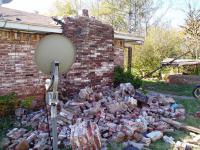
For the first time, new USGS maps identify potential ground-shaking hazards from both human-induced and natural earthquakes. The new report shows that approximately seven million people live and work in areas of the central and eastern United States (CEUS) with potential for damaging shaking from induced seismicity. Within a few portions of the CEUS, the chance of damage from all types of earthquakes is similar to that of natural earthquakes in high-hazard areas of California.
-
-
1.4 billion people face severe natural disaster risks in South Asia
New data has revealed that 1.4 billion people in South Asia, or 81 percent of the region’s population, are acutely exposed to at least one type of natural hazard and live in areas considered to have insufficient resources to cope with and rebound from an extreme event. Poor governance, weak infrastructure, and high levels of poverty and corruption amplify the economic and humanitarian losses associated with significant natural hazards events – and these factors will exacerbate the consequences of natural disasters especially in Africa, a continent which hosts eight out of the nine countries most vulnerable to natural hazards.
-
-
Understanding where tremblors are more likely to occur, helping communities prepare
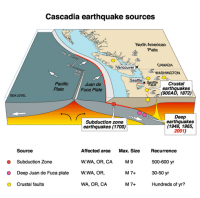
Some of the world’s largest earthquakes occur on subduction zones, where a cold dense oceanic plate moves under a warmer continental plate. This was the case for the massive Tohoku earthquake in Japan in 2011, which was followed by a tsunami with waves up to thirty-three feet that left thousands dead and inflicted extensive damage to buildings and infrastructure, including four major nuclear power stations.
-
-
Making sure insurance for an uncertain climate is effective
In December, negotiators at the Paris climate meeting adopted insurance as an instrument to aid climate adaptation. Earlier in the year, the leaders of the G7 pledged to bring climate insurance to 400 million uninsured individuals in poor countries by 2020. Experts welcome these developments, but also highlight the difficulties that policymakers will face in turning the ideas into action. They warn that ill-designed and poorly implemented insurance instruments could fail to reach the goals of negotiators, or worse, prove detrimental to the very people they are intended to protect.
-
-
To avoid multiple climate tipping points, CO2 emissions should be stopped by 2050: Study
To avoid multiple climate tipping points, policy makers need to act now to stop global CO2 emissions by 2050 and meet the Paris Agreement’s goal of limiting global warming to 1.5 °C above pre-industrial levels, a new study has said. The new research shows that existing studies have massively under-valued the risk that ongoing carbon dioxide emissions pose of triggering damaging tipping points.
-
-
2015 made history with record heat, weather extremes: WMO
The year 2015 made history, with shattered temperature records, intense heatwaves, exceptional rainfall, devastating drought, and unusual tropical cyclone activity, according to the World Meteorological Organization. That record-breaking trend has continued in 2016. The global average surface temperature in 2015 broke all previous records by a wide margin, at about 0.76° Celsius above the 1961-1990 average because of a powerful El Niño and human-caused global warming. With 93 percent of excess heat stored in the oceans, ocean heat content down to 2,000 meters also hit a new record.
-
More headlines
The long view
Trump Aims to Shut Down State Climate Policies
President Donald Trump has launched an all-out legal attack on states’ authority to set climate change policy. Climate-focused state leaders say his administration has no legal basis to unravel their efforts.
